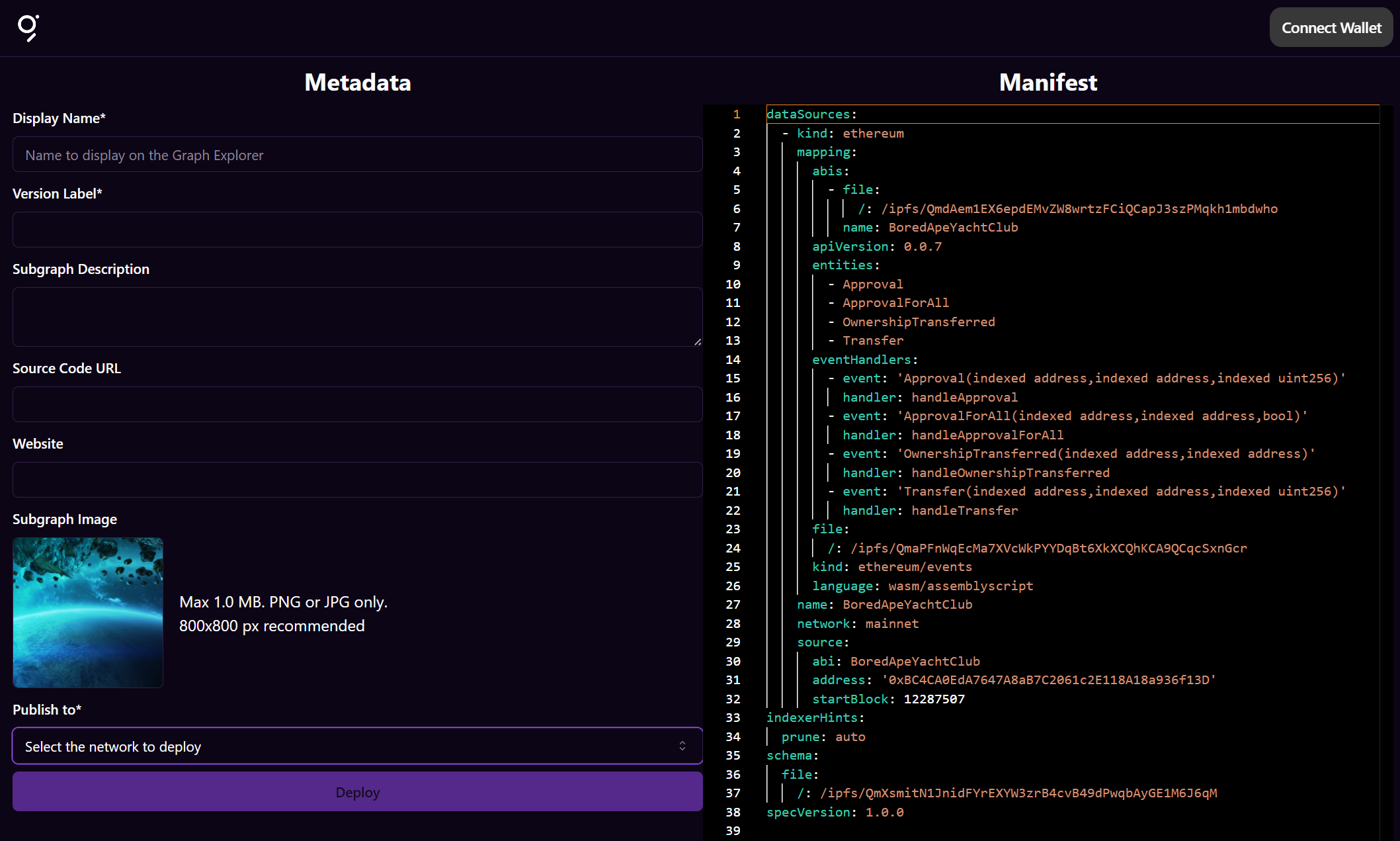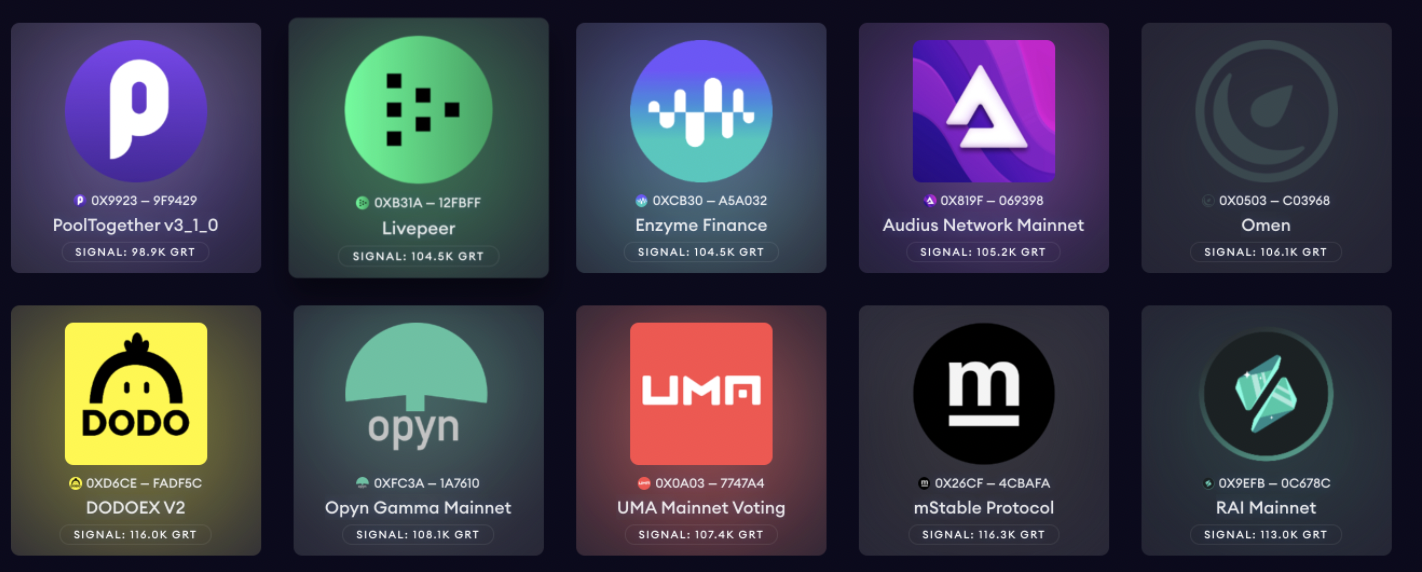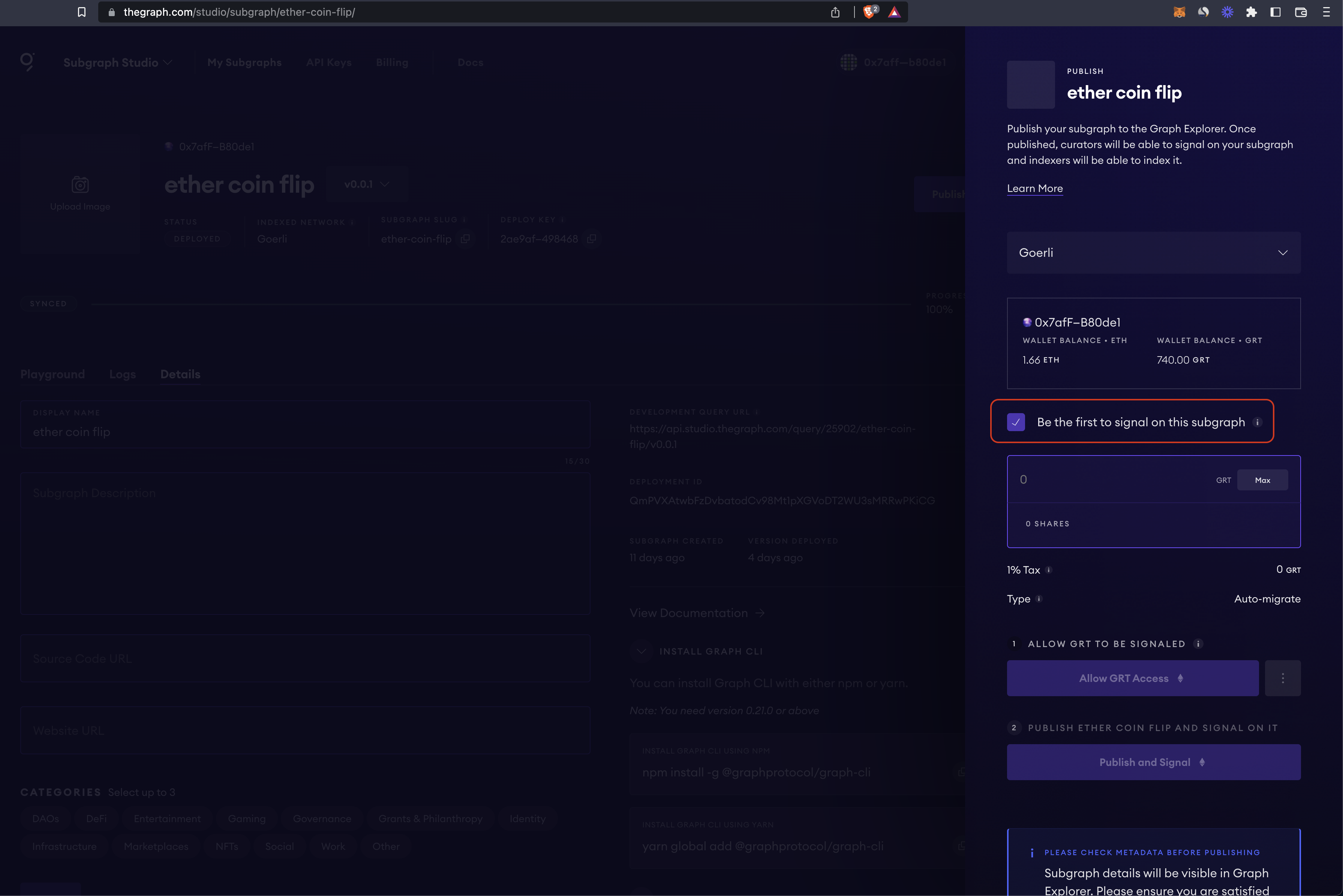3 minutos
Como Editar um Subgraph na Rede Descentralizada
Once you have deployed your Subgraph to Subgraph Studio and it’s ready to go into production, you can publish it to the decentralized network.
When you publish a Subgraph to the decentralized network, you make it available for:
- Curadores, para começarem a curadoria.
- Indexadores, para começarem a indexação.
Veja a lista das redes apoiadas aqui.
Edição do Subgraph Studio
- Entre no painel de controlo do Subgraph Studio
- Clique no botão Publish (Editar)
- Your Subgraph will now be visible in Graph Explorer.
All published versions of an existing Subgraph can:
-
Ser editados no Arbitrum One. Saiba mais sobre The Graph Network no Arbitrum.
-
Index data on any of the supported networks, regardless of the network on which the Subgraph was published.
Updating metadata for a published Subgraph
- After publishing your Subgraph to the decentralized network, you can update the metadata anytime in Subgraph Studio.
- Após salvar as suas mudanças e publicar as atualizações, elas aparecerão no Graph Explorer.
- É importante notar que este processo não criará uma nova versão, já que a sua edição não terá mudado.
Publicação da CLI
As of version 0.73.0, you can also publish your Subgraph with the graph-cli.
- Abra a
graph-cli. - Use os seguintes comandos:
graph codegen && graph builde depoisgraph publish. - A window will open, allowing you to connect your wallet, add metadata, and deploy your finalized Subgraph to a network of your choice.

Como personalizar o seu lançamento
You can upload your Subgraph build to a specific IPFS node and further customize your deployment with the following flags:
1USAGE2 $ graph publish [SUBGRAPH-MANIFEST] [-h] [--protocol-network arbitrum-one|arbitrum-sepolia --subgraph-id <value>] [-i <value>] [--ipfs-hash <value>] [--webapp-url3 <value>]45FLAGS6 -h, --help Mostra ajuda da CLI.7 -i, --ipfs=<value> [default: https://ipfs.thegraph.com/api/v0] Envia resultados da build a um node IPFS.8 --ipfs-hash=<value> Hash IPFS do manifest do subgraph a ser implantado.9 --protocol-network=<option> [default: arbitrum-one] A rede a ser usada para a implantação do subgraph.10 <options: arbitrum-one|arbitrum-sepolia>11 --subgraph-id=<value> ID do Subgraph a ser editado.12 --webapp-url=<value> [default: https://cli.thegraph.com/publish] URL da UI na web que queres usar para implantar.Adding signal to your Subgraph
Developers can add GRT signal to their Subgraphs to incentivize Indexers to query the Subgraph.
-
If a Subgraph is eligible for indexing rewards, Indexers who provide a “proof of indexing” will receive a GRT reward, based on the amount of GRT signalled.
-
You can check indexing reward eligibility based on Subgraph feature usage here.
-
Verifique as redes específicas apoiadas here.
Adding signal to a Subgraph which is not eligible for rewards will not attract additional Indexers.
If your Subgraph is eligible for rewards, it is recommended that you curate your own Subgraph with at least 3,000 GRT in order to attract additional indexers to index your Subgraph.
The Sunrise Upgrade Indexer ensures the indexing of all Subgraphs. However, signaling GRT on a particular Subgraph will draw more indexers to it. This incentivization of additional Indexers through curation aims to enhance the quality of service for queries by reducing latency and enhancing network availability.
When signaling, Curators can decide to signal on a specific version of the Subgraph or to signal using auto-migrate. If they signal using auto-migrate, a curator’s shares will always be updated to the latest version published by the developer. If they decide to signal on a specific version instead, shares will always stay on this specific version.
Indexers can find Subgraphs to index based on curation signals they see in Graph Explorer.

Subgraph Studio enables you to add signal to your Subgraph by adding GRT to your Subgraph’s curation pool in the same transaction it is published.

Alternatively, you can add GRT signal to a published Subgraph from Graph Explorer.

Saiba mais sobre a curadoria na The Graph Network.